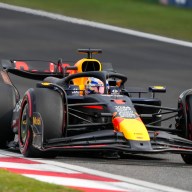Model: 1995 to 2005 Pontiac Sunfire / Chevrolet Cavalier
Vehicle type: Sedan / Coupe
Approximate price range: $1,500 to $5,000
History/description: The Cavalier and Sunfire were two mechanically-identical GM small sedan or coupe models sold under the Chevrolet and Pontiac brands, respectively. Sharing the J-Body platform, these twins were eventually replaced by the Chevrolet Cobalt and Pontiac G5 Pursuit.
The Cavalier and Sunfire weren’t out to set any records for refinement or performance, but they’re a popular choice where price and value are concerned.
Coupe, convertible or sedan models were available with four-cylinder power and automatic or manual transmissions. With relatively plentiful selection, finding an ideal used candidate in your price range should be fairly easy.
Older machines got a low-tech 2.2-litre unit with 115 or 120 horsepower, depending on the year. This engine wasn’t fancy or fast, but it was decent on fuel, simple, reliable, and cheap to repair.
Optional was a 2.4-litre four-cylinder engine with dual overhead cams. It was employed in the sportier Cavalier Z24 and Sunfire GT models, and created 155 horsepower. Some owners argue that this is the “least” reliable engine in the model range, though it is the most powerful.
Later in life, the Cavalier and Sunfire got a new 2.2-litre, 140 horsepower ECOTEC unit that replaced both earlier engines from 2002 and onwards.
What owners like: Owners typically selected the Cavalier and Sunfire Coupe models for their sportiness and styling, with the sedan variants typically chosen for their overall sensibility.
According to many owners, the Sunfire and Cavalier were also refined and comfortable relative to their price.
What owners hate: Common complaints tend to deal with unwelcomed sounds — including squeaks and rattles, road noise and squealing brakes. Some owners wish for more power from the older 2.2-litre engine, too.
Common issues: Start your test drive by inspecting all interior electronics for proper operation– including power windows, the sunroof and the climate control fan speed selector. The latter should work on all speed settings, not just “high.” If that’s not the case, a new blower-motor resistor is likely needed.
Does the car sound like it’s got a trunk full of junk when driven over bumps? If so, worn out strut mounts are probably to blame. Similar sound effects from the front end indicate that mechanical attention is needed, too.
Avoid a model with extensive body or powertrain modifications, and be sure to inspect the car fully for rust — including beneath the vehicle and under the carpeting in the trunk and footwells.
Finally, check the condition and level of all fluids, budgeting for a full fluid change and tune-up if you’re unsure of the vehicle’s service history.
The verdict: As with any used car, maintenance is key. If you find a deal on a J-Body that’s been well taken care of, you’ll likely find it a low-cost and decently reliable ride. Just stay on top of the prescribed regular maintenance to keep it that way.
















